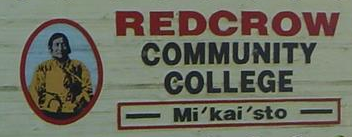A’sííya’tsis – Veratrum viride (Corn Lily, Makes You Sneeze)
*WARNING: American False Hellebore roots are very poisonous and if ingested can cause death.
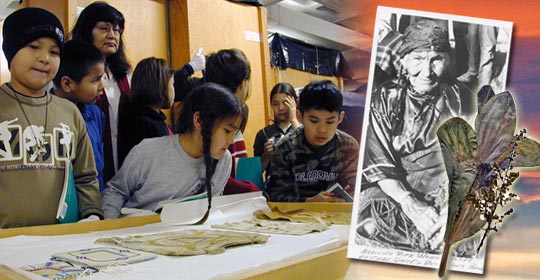
Students examine cultural artifacts from the Glenbow Museum.
(Glenbow Museum. (2005). Nitsitapiisinni Exhibit.
Calgary, Alberta: Blackfoot Gallery Committee)
(Photo courtesy of Glenbow Museum Archives NA-5579-38)
A’sííya’tsis
A’siiya’tsis iikaipispssaisskii. Iitaisaisskii otsitotsikahkohpii. Mo Aapistsiskitsaato’siyi ki Iisaamsootammstaa otahkoinattsi tsahtao iitaisaissksiimokonattsi pisatssaisskiistsi iitsitao’taapistsisskitsiyaaw.
Amo ni’nsimaan akohkotohtsipotsima’so’p kakitaanistsi kitommahkitaapiiminnooniksi isksinimmiaw maahkohkotaanistotoitsikato’sa aahkitohtaohkotohtssokinakio’s. Aiskssi’piaw ki iitohtayisitapiyo’piaw. Ipaipstssiitami’opakitai’stsispiyo’p ki ihtaiksistsikimisto’p akitai’stsisookowani’op. Aisatsi’p omi miistsis ki iitohtowa’siiyatsohso’p. Pookaiksi akitaohpiikihkayaawa iitaohkotaayaawa omi niipi maahkitowawanihtsissaa.
American False Hellebore
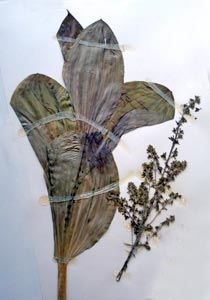
Veratrum viride
Galileo Educational Network
*WARNING: American False Hellebore roots are very poisonous and if ingested can cause death.
American False Hellebore, which we call “Corn Lily”, grows from its thick root up to 1-2 metres tall in low wooded areas with moist soil. It gets its name because it has leaves covered with fine hairs that grow up the stalk of the plant just like a corn stalk. From May to June, it blooms with clusters of tiny green or yellow flowers that are 15-70 cm long.
This plant is posionous but our elders had knowledge about how to take the poison and make it into cures for many sicknesses.
Vérâtre vert nord-américain
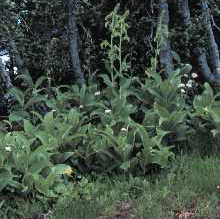
Veratrum viride
Larry Allain @ USDA-NRCS PLANTS Database
*AVERTISSEMENT : Les racines du vérâtre vert américain sont très toxiques. Elles peuvent entraîner la mort si elles sont ingérées.
Le vérâtre vert nord-américain a des racines épaisses et peut mesurer de 1 à 2 mètres de haut. Il pousse dans les régions boisées basses à sol humide. Son nom vient du fait que ses feuilles sont couvertes de poils fins qui poussent le long de la tige de la plante, un peu comme un épi de maïs. Il fleurit de mai à juin. Ses grappes de petites fleurs vertes ou jaunes mesurent de 15 à 70 centimètres de long.
Même si cette plante est toxique, nos aînés savaient comment en extraire le poison et s’en servir comme remède contre de nombreuses maladies.

Photo Credit: Sherri Rinkel-MacKay
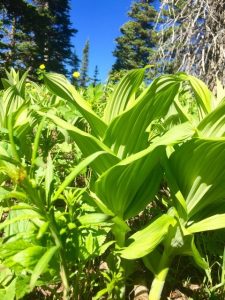
Photo Credit: Sherri Rinkel-MacKay
- Hellson, John C. (1974). Ethnobotany of the Blackfoot Indians. Ottawa: National Museums of Canada.
- Johnston, Alex. (1987). Plants and the Blackfoot. Lethbridge, Alberta: Lethbridge Historical Society.
- Moerman, Daniel E. (1998). Native American Ethnobotany. Portland: Timber Press.
- Tilford, Gregory. (1997). Edible and Medicinal Plants Of The West. Missoula, Montana: Mountain Press Publishing Company.
- Willard, Terry. (1992). Edible and Medicinal Plants of the Rocky Mountains and Neighboring Territories. Calgary, Alberta: Wildrose College of Natural Healing.



